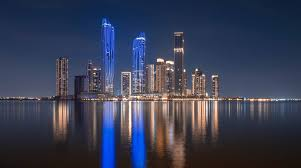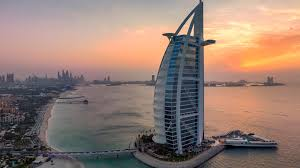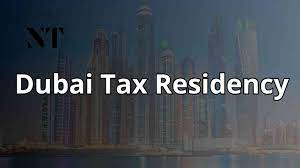Now Reading: How Emaar Blends Global Design With Local Culture Beautifully 2025
-
01
How Emaar Blends Global Design With Local Culture Beautifully 2025
How Emaar Blends Global Design With Local Culture Beautifully 2025

When it comes to creating world-class real estate that speaks both globally and locally, Emaar is a clear leader. From the towering Burj Khalifa in Dubai to modern residential communities across the Middle East, Asia, and beyond, Emaar has found a way to blend international design excellence with deep respect for local traditions.
But how exactly does Emaar make this mix work so well? And why is this integration so important for modern real estate developers? Let’s explore how Emaar is shaping cities by mixing global design trends with the unique culture of each place it builds in.
Understanding Emaar’s Global Vision

Emaar Properties is one of the most recognized real estate developers in the world. Headquartered in Dubai, the company is responsible for building not just properties, but lifestyles. Their portfolio includes luxury homes, shopping malls, hospitality, entertainment, and urban communities.
The key to Emaar’s success lies in their global perspective. The design teams travel the world, keeping up with the latest trends in architecture, interior design, and sustainable living. However, what sets Emaar apart is their ability to take these global elements and customize them to suit the local environment, culture, and identity.
Local Inspiration, Global Execution

Emaar’s developments are known for being modern yet deeply rooted in the culture of the place they are built. This philosophy applies to every aspect of the design process, from the layout and building materials to color schemes and art installations.
Here are a few examples of how Emaar integrates global trends into local contexts:
1. Dubai: A Fusion of Modern Luxury and Emirati Heritage

Dubai is where Emaar’s story began. The Downtown Dubai area, with landmarks like The Dubai Mall and the Burj Khalifa, showcases cutting-edge architecture. But look closer, and you’ll find traditional Arabesque patterns, mashrabiya-style screens, and desert-inspired color palettes.
These design elements pay tribute to Emirati culture, while still delivering a futuristic, luxurious feel. It’s a fine example of how Emaar respects the cultural soul of the region without compromising modern aesthetics.
2. India: Contemporary Living with Cultural Sensitivity
In India, Emaar has brought its international design experience to cities like Gurgaon, Lucknow, and Jaipur. Here, developments like Emaar Digi Homes and Palm Drive feature smart home technologies, clean urban designs, and eco-friendly spaces.
Yet, they are also built with an understanding of Indian family living styles, such as large gathering spaces, balconies for natural ventilation, and even Vastu-friendly layouts, which are important to many local buyers.
3. Egypt: Heritage Meets Modern Comfort
In Cairo, Emaar’s Uptown Cairo and Marassi resorts bring Mediterranean and global resort-style design to the Egyptian market. These developments include historical nods through their use of local stone, mosaic art, and courtyard-inspired layouts, similar to traditional homes found along the Nile.
By combining these cultural touchpoints with world-class amenities like golf courses, wellness centers, and designer retail, Emaar attracts both local elites and international investors.
The Key Pillars of Emaar’s Design Integration
To successfully mix global trends with local culture, Emaar focuses on a few core strategies:
• Cultural Research and Collaboration
Emaar works with local architects, historians, and designers to understand the unique characteristics of each place. This ensures that every project reflects the identity of the region it’s built in.
• Sustainable and Smart Design
Modern buyers expect homes and spaces that are both beautiful and environmentally responsible. Emaar uses green building materials, solar technologies, and smart automation systems in its designs—all aligned with the latest global trends in sustainability.
• Flexibility and Customization
Emaar allows a certain level of customization for buyers, especially in culturally sensitive markets. Whether it’s prayer rooms in homes, shaded courtyards, or design layouts that promote extended family living, Emaar’s flexibility makes its developments more relatable to local people.
Why This Strategy Works
Emaar’s approach works because it respects identity while offering aspiration. Homebuyers and investors want to be part of something global, but they also want their homes to feel familiar, safe, and culturally aligned.
By building bridges between heritage and modernity, Emaar creates properties that resonate emotionally with residents. Whether someone is moving into an apartment in Dubai or buying a beach house in Egypt, they can sense both global excellence and local belonging.
A Look to the Future
As Emaar expands into more international markets, from Pakistan to Saudi Arabia, its strategy remains clear: build globally, think locally.
In upcoming projects, expect to see more use of AI in home automation, climate-adaptive designs, and even culturally-inspired digital art within shared spaces. Emaar is also investing in smart cities that combine global urban planning ideas with traditional community structures.
The result? Cities and homes that feel like the future while still honoring the past.
Final Thoughts
Emaar’s ability to merge global design trends with local culture is not just a creative decision—it’s a smart business move. In an age where people are more connected and more proud of their identities, Emaar stands out by offering homes and spaces that respect both worlds.
By learning from the best international ideas and tailoring them to fit local tastes, customs, and lifestyles, Emaar sets a standard that many real estate developers around the world now strive to follow.
Read More:- Shobha Realty Launches Its Most Luxurious Project Yet—Full Details Inside 2025






















